Hemp-Nettle
Hemp-nettle is a vigorous competitor for space and nutrients. Widespread in the Prairies, it is difficult to manage once it becomes established.
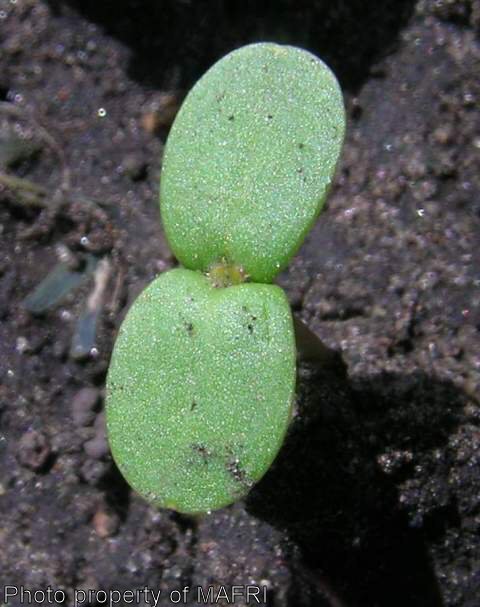 click to enlarge |
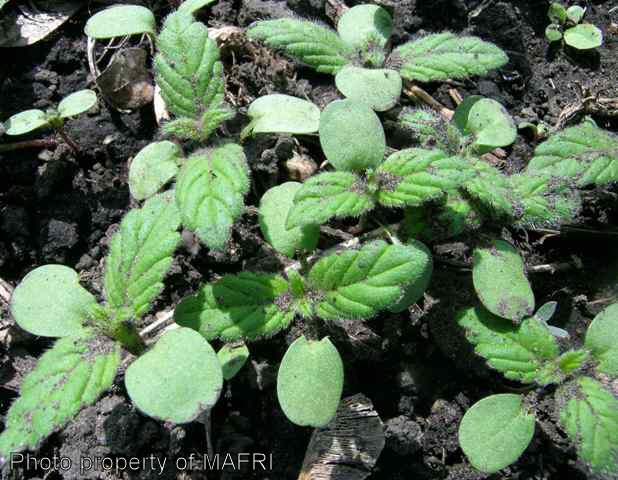 |
 |
 |
 |
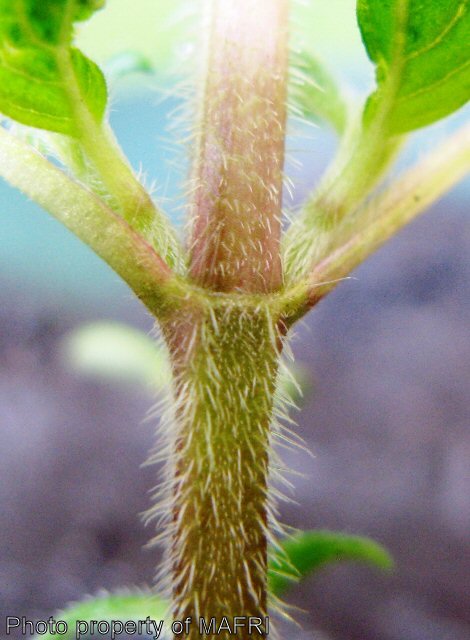 |
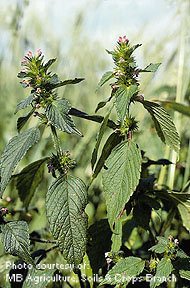 |
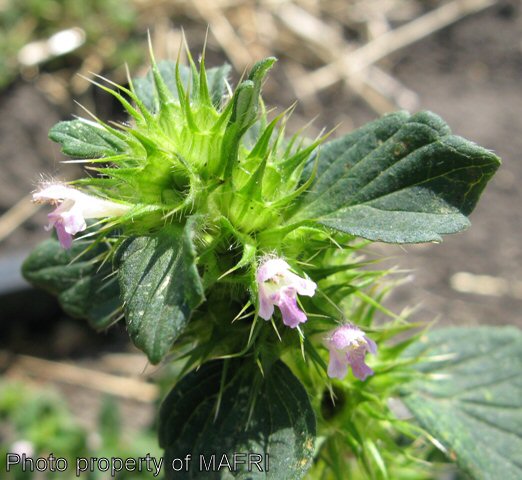 |
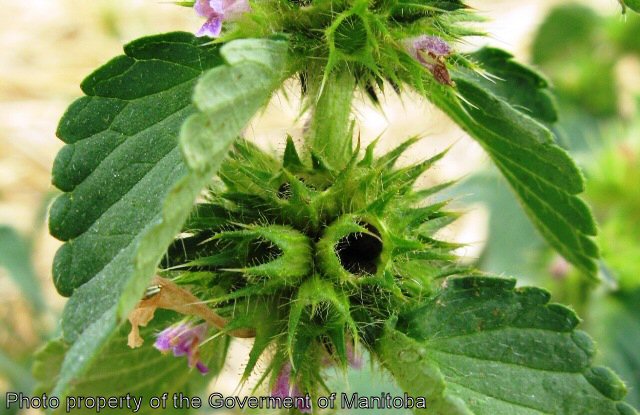 |
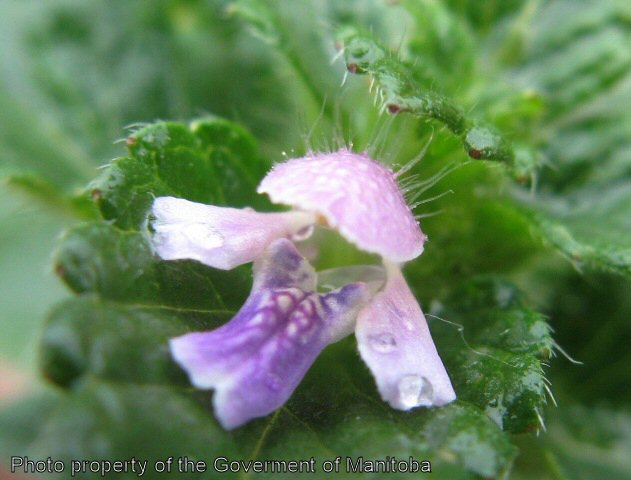 |
 |
Biology
An annual, reproducing by seeds, this weed has stems that are square and covered with bristly hairs. The stems are 30-75 cm (12-30 in.) high and are swollen at the nodes. The leaves are opposite, 5-10 cm (2-4 in.) long, coarsely toothed, hairy, and long-stalked. The flowers are clustered in the axils of the upper leaves and are white or pink, suffused with purple. The seeds can remain dormant for long periods of time, making it hard to manage this weed once it becomes established.
Each flower produces a cluster of 4 seeds. Hemp-nettle germinates best at high temperatures. It thrives in open, wooded areas, cultivated fields, and undeveloped areas.
Scouting Techniques
Take a minimum of 20 weed counts across the field. Check low spots for patches. Scout fields early as the weed is most sensitive to herbicides in early stages.
Effects On Crop Quality
Hemp-nettle seeds are difficult to clean from grain.
Threshold/Yield Loss
Crops differ widely in their ability to tolerate this weed. Hemp-nettle densities of 150-225 plants per square metre (sq. yd.) can reduce wheat yields by 20-40%. Canola yields can be reduced by up to 25% at weed densities of 130 plants per square metre (sq. yd.). With densities of 400 plants per square metre (sq. yd.), hemp-nettle can reduce yields of oats by 30% and seedling alfalfa by 85%.
Control Tips
Sow clean, certified seed to prevent its accidental spread. Early sown, uniform stands of competitive crops such as wheat, barley and canola are effective at suppressing hemp nettle.
Herbicides are available in cereal crops, canola and peas. Flax and certain special crops are limited in terms of herbicide options.

